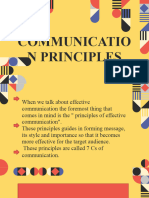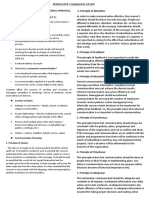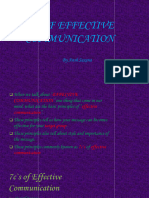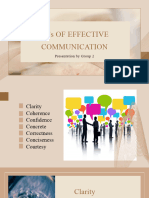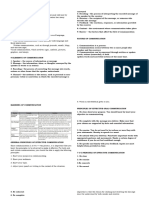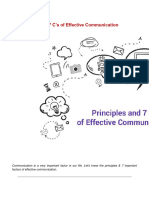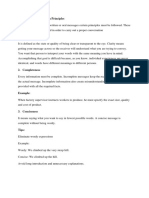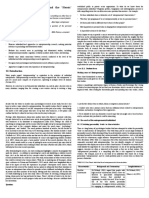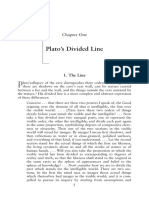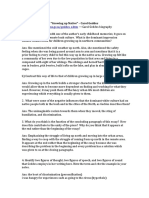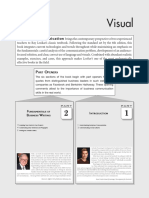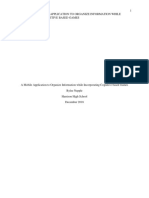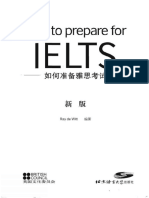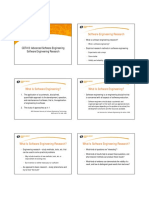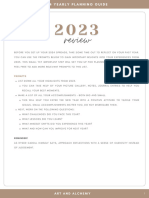Principles of Communication
Detailed Presentation
� Communication
• “Communication refers to the process of
exchanging information, ideas, thoughts,
opinions, or messages between individuals,
groups, or organizations through various
channels.”
• Channels of communication:
• 1. Verbal Communication:
• - Speech (face-to-face, phone, video calls)
� Principles of Communication
• The principles of effective communication
serve as guidelines to ensure that information
is clearly and accurately conveyed, fostering
better understanding. Here are some key
principles:
• 1. Clarity
• 2. Coherence
• 3. Conciseness
• 4. Correctness
� Clarity
• Clarity refers to the quality of being clear,
transparent, and easily understandable. In
communication, clarity ensures messages are:
• Verbal Clarity:
• - Simple: Avoiding complex vocabulary or
jargon
• - Logical: Coherent and well-structured
arguments
� Coherence
• Coherence refers to the quality of being logical
and consistent. In writing and speaking,
coherence helps ensure that ideas flow
smoothly and are connected in a way that
makes sense to the audience.
• Coherence in Writing:
• - Logical Structure: Organize ideas in a logical
order
• - Clear Topic Sentences: Summarize the
� Conciseness
• Conciseness means expressing ideas clearly
and efficiently with as few words as possible,
without losing essential information. It means
avoiding unnecessary words or phrases that
dilute the main point.
• Concise Language:
• - Use few words to convey a message
• - Avoid redundancy and repetition
• - Focus on essential points
� Correctness
• Correctness ensures that the information you
convey is accurate and free from errors.
• Key Points:
• - Double-check facts and figures to avoid
misinformation
• - Proofread for grammatical or spelling errors
• - Choose words with the appropriate meaning
� Courteousness
• Courteousness is the act of showing respect,
politeness, and consideration in your
interactions.
• Why It Matters:
• - Builds trust
• - Makes communication more effective and
enjoyable
• - Reduces misunderstandings and conflicts
� Conclusion
• Effective communication is built on five
principles:
• - Clarity: Avoids misunderstandings
• - Coherence: Ensures logical flow
• - Conciseness: Delivers clear messages
• - Correctness: Strengthens credibility
• - Courteousness: Enhances relationships
• Closing Thought:
